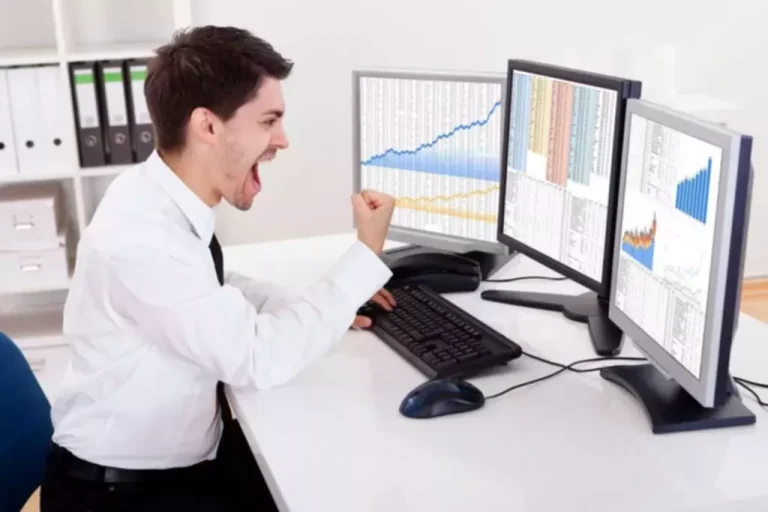Content
The system verifies the validity of each order, through pre-trade risk checks, identifying and mitigating potential risks before execution. This proactive approach safeguards both the exchange and its users, building a secure trading environment. Matching the orders of buyers and sellers is the primary work of specialists and market makers in the exchanges. The matches happen when compatible buy orders and sell orders for the same security are submitted in close proximity in price and time. To let the stock exchange handle your trade orders, you’d need to be a Decentralized finance certified broker.
Why does High-frequency Trading prefer Electronic Systems?
The willingness of traders to buy or sell an asset at a predefined volume and price is logged by these venues, forming public “order books” for each tradable symbol. Centralized matching engines offer real-time matching with https://www.xcritical.com/ remarkable speed and efficiency. Operating on a single central server, they swiftly process orders, making them ideal for high-traffic exchanges where quick matching is crucial. In the past, trading and order matching were heavily based on phone calls and manual processes. Such systems were significantly more time-consuming and prone to human error when compared to the sophisticated matching engine systems we use today.
- A reliable order-matching algorithm can solve many issues arising in exchanges due to its numerous benefits.
- Market participants are protected from entering an order with invalid quantities.
- Pro Rata Allocation matches orders based on price, TOP orders, and size.
- Remember, while centralized exchanges are quick, they might be easier to attack than decentralized ones.
- The performance of the engine determines its efficiency and reliability.
Matching engine round trip latency, staleness, and backtest event sequencing

This results in reduced trading activity, lower market liquidity, and increased volatility in the short term. Flash matching engine software crashes also prompt regulatory authorities to investigate the causes and implement stricter regulations on electronic trading systems, algorithmic trading, and market manipulation tactics. This leads to increased compliance costs for market participants and potentially limits the growth of algorithmic trading. When selecting a matching engine, it’s essential to ensure it supports the specific asset classes that your trading platform will offer.
Understanding the Role of Order Matching Engine in a Centralized Crypto Exchange
Transparency of trading – A match system improves transparency in the financial market by providing equal access to buy and sell order data, leading to more accurate price determination. The order matching system is paramount in every exchange for its efficient execution of trades and ensuring that all transactions are fulfilled at the best price. These engines assist in linking purchasers with sellers and promote trades by comparing their orders to find ideal matches. Match engines’ significance cannot be overrated, and a thorough comprehension of their function is crucial for everyone involved in trading.
The two most common algorithms used for order matching are known as price/time priority (also called First In First Out or FIFO) and pro-rata, both of which have various strengths and weaknesses. One benefit of price/time priority is that it motivates market participants to narrow the spread, which is the difference between the best quote on either side of the book. A weakness of price/time priority is that it can be more computationally demanding than pro-rata. Together, these components ensure that the order matching system operates smoothly and efficiently.
Regulatory compliance is another significant challenge for order matching systems. These systems must comply with a range of regulations, from data protection laws to trading rules. Ensuring compliance can be a complex and time-consuming process, requiring a thorough understanding of the relevant laws and regulations, as well as robust compliance procedures. TWAP-based algorithms calculate the average price of all orders within a certain period and execute multiple trades gradually to achieve that average price. TWAP algorithms can reduce the impact of large orders by splitting them into smaller orders that will eventually reach the same average price as the initial order. The most commonly used algorithm is the first in, first out (FIFO), which prioritizes fulfilling the older order first.
The above, coupled with our deep domain knowledge of exchanges trading platforms and post trade systems, makes us an ideal partner. All orders at the same price level are filled according to time priority; the first order at a price level is the first order matched. The Threshold Pro-Rata algorithm is an enhanced pro-rata algorithm that incorporates a priority (top order) to the first incoming order that betters the market. If priority is established, aggressor orders are first allocated to the top order up to the maximum configured priority allocation (volume cap).

Furthermore, we emphasize security, scalability, and a user-centric design to ensure that the crypto exchange provides a robust and seamless trading experience. To empower traders with the latest market information, the order matching engine consistently updates the order book in real-time. This continuous flow of information allows traders to make informed decisions based on the most up-to-date market conditions. The ability to react quickly to changing market dynamics is crucial, and the order matching engine facilitates this by providing real-time updates. Centralized exchanges must cater to a diverse range of trading strategies, and algorithmic trading has emerged as a dominant force in the market.
It gives you access to financial instruments, including futures and options contracts. Globex is open 24 hours a day, seven days a week, and allows traders to trade in marketplaces worldwide. The NSE uses a price-time priority algorithm to match buy and sell orders. Under this system, orders at the best price (highest bid or lowest offer) get first priority. The order that was entered first based on the timestamp gets matched first, following a first in, first out rule if multiple orders exist at the same price level.
Advanced risk management features are integrated into these systems, helping to monitor and manage financial risks, such as exposure, margin requirements, and position limits. The system ensures that all trades and activities comply with the relevant regulations and policies, reducing the possibility of legal and regulatory issues for traders and financial institutions. The duration within which the market participant must accept or reject the provided quotations. This helps to ensure that the quotes remain relevant and reflective of the current market conditions. The difference between the highest bid and the lowest offer price provided by the liquidity providers.

While the order book logs all market order requests, the matching engine actively scans through these orders to pair buyers with sellers, facilitating seamless trade execution. “The matching engine is the heart of any trading platform. It needs to be fast, fair, and reliable to maintain market integrity,” says John Smith, CTO of CryptoTrade, a leading cryptocurrency exchange. Matching engines are pivotal in modern trading infrastructure, driving efficiency and transparency across financial markets. Their integration into trading platforms brings many advantages that can transform market operations. These features make DXmatch a powerful and reliable choice for trading venues and exchanges seeking an efficient and high-performance order matching engine. Decentralized matching engines operate on a peer-to-peer network, providing resilience against attacks.
Details of executed trades, such as the execution price, quantity, time of execution, and counterparty information. DTC also manages and processes corporate actions, such as stock splits, mergers, and dividend payments, updating the shareholder records accordingly. It facilitates securities lending and borrowing between its participants, helping to maintain market liquidity and allowing parties to meet their financial objectives.
Electronic trading emerged as the preeminent method of conducting business over the 2000s in most of the world’s financial markets. High-frequency trading, also known as HFT, is a relatively recent development in trading strategies. It is characterised by the use of algorithms to complete trades in a matter of milliseconds. Worries arose regarding the stability and fairness of the market because of this, and as a result, regulators started implementing new laws to address these issues. It matches with the earliest sell order available when a buy order enters the system. It matches with the earliest buy order available when a sell order enters the system.
